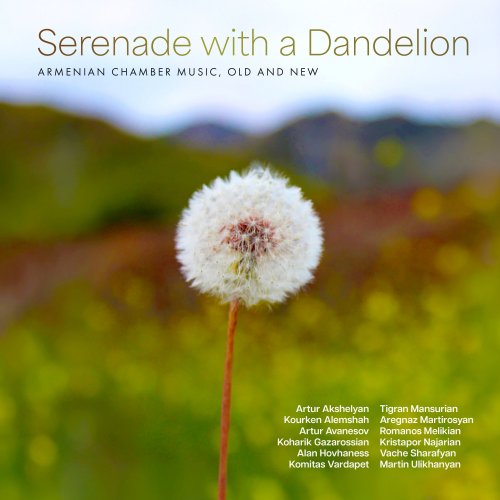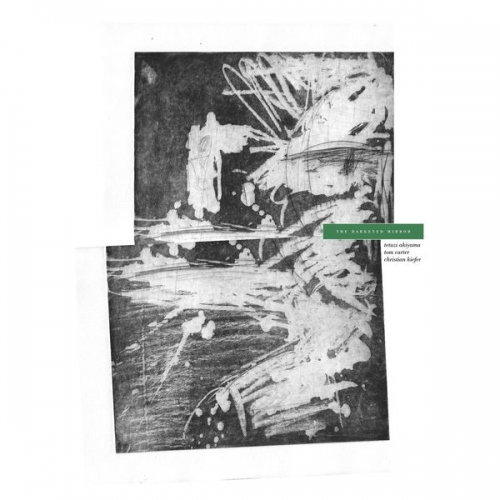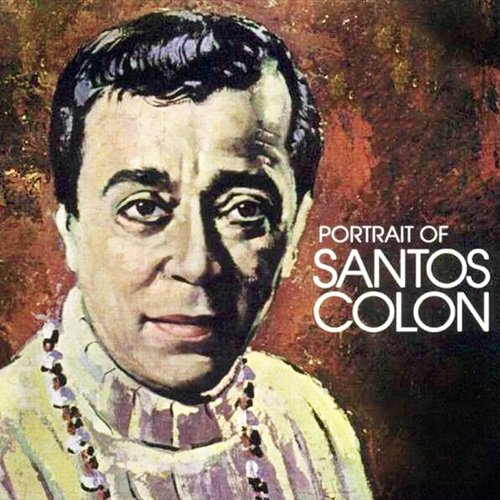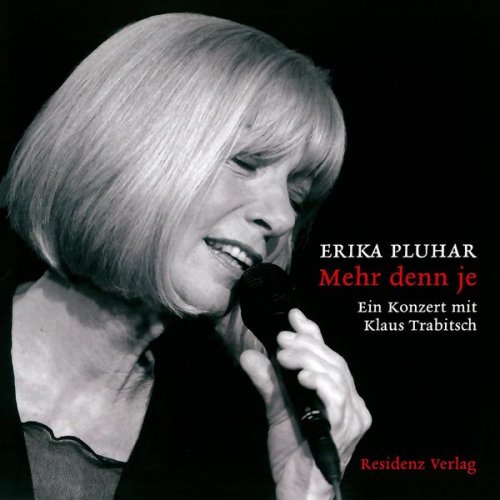Phil O’Connor, Movses Pogossian, Ela Kodžas, Damon Zavala - Serenade with a Dandelion: Armenian Chamber Music, Old and New (2024) [Hi-Res]

Artist: Phil O’Connor, Movses Pogossian, Ela Kodžas, Damon Zavala, Niall Tarō Ferguson, Ani Kavafian, Ida Kavafian, Artur Avanesov, Edvard Pogossian
Title: Serenade with a Dandelion: Armenian Chamber Music, Old and New
Year Of Release: 2024
Label: New Focus Recordings
Genre: Classical
Quality: flac lossless (tracks) / flac 24bits - 96.0kHz +Booklet
Total Time: 04:30:17
Total Size: 1.21 / 4.91 gb
WebSite: Album Preview
TracklistTitle: Serenade with a Dandelion: Armenian Chamber Music, Old and New
Year Of Release: 2024
Label: New Focus Recordings
Genre: Classical
Quality: flac lossless (tracks) / flac 24bits - 96.0kHz +Booklet
Total Time: 04:30:17
Total Size: 1.21 / 4.91 gb
WebSite: Album Preview
CD1
01. Serenade with a Dandelion
02. Lachrymae
03. Sillage: I. —
04. Sillage: II. Ablaze
05. Sillage: III. IT
06. Chameleon
07. String Quartet No. 2
CD2
01. Across Mount Alagyaz
02. As I Came Down the Mountain
03. Walk On, Walk On!
04. My Love Walked with a Glow
05. Apricot Tree
06. Homeless
07. Crane
08. Howl, Crane
09. Glowing in the Garden
10. Weep Not
11. I Loved
12. Wish
13. Canti paralleli: No. 1, Ode for the Lost Beloved
14. Canti paralleli: No. 2, Because of Your Love
15. Canti paralleli: No. 3, Over the Blue Lake
16. Canti paralleli: No. 4, And at Eventide
17. Canti paralleli: No. 5, My Soul
18. Canti paralleli: No. 6, Snow over the Mountains
CD3
01. Wondrous It Is...
02. String Quartet: I. Cognitive Study of the Generalized Anxiety Disorder
03. String Quartet: II. Drammatico
04. String Quartet: III. Quand l'aubespine fleurit...
05. String Quartet: IV. All'ungherese
06. Tremors
07. Fantasy on Tigran Mansurian's Film Music
08. String Trio, Op. 201: I. Adagio
09. String Trio, Op. 201: II. Allegro
10. String Trio, Op. 201: III. Lento
11. Ta mère n'est plus
12. A Tale for 2 Violins: I. Introduction - Over the Plateau
13. A Tale for 2 Violins: II. Kef - Festivities (Loy Loy)
14. A Tale for 2 Violins: III. Rendezvous (Ambets Gorav Lousengan)
15. A Tale for 2 Violins: IV. Capture (Groung)
16. A Tale for 2 Violins: V. Misty Morning - Lament
17. A Tale for 2 Violins: VI. Escape (Nehavent Longa)
CD4
01. Feux follets: Des Fischers Liebestod
02. Feux follets: La lumineuse
03. Feux follets: Hommage à herre Grieg
04. Feux follets: Intermezzo III
05. Feux follets: Les coucous
06. Feux follets: Hier ist Friede
07. Feux follets: Für Hanni
08. Feux follets: Nenia
09. Feux follets: Intermezzo IV
10. Tezeta
11. Tre-sonate: I. Allegro assai
12. Tre-sonate: II. Lento
13. Tre-sonate: III. Presto
Armenia is a singular nation in possession of a uniquely preserved culture, perched high in the Caucasus mountains with an ancient history. Despite being surrounded by powerful and influential neighbors, Armenia is largely homogenous and preservation of its rich history is prioritized and show up in its artistic communities. Serenade with a Dandelion is a follow up to violinist and curator Movses Pogossian’s Modulation Necklace, also featuring exclusively Armenian repertoire (FCR244), and chronicles a rich contemporary lineage of chamber music and works for voice. Pogossian has organized the four discs of Serenade with a Dandelion by instrumentation — the first and third CDs highlight chamber music without piano, the second focuses on art song, and the last on music for piano, mostly featuring solo works but closing with a work for piano trio. Throughout this collection of music spanning nearly a century, one hears several aesthetic continuities. Several of the pieces use folkloric material as their thematic basis, there is a frequent reliance on modal pitch material drawn from the harmonic minor scale, melodic ornamentation especially in melismatic figures is employed frequently, and there is a consciousness of balancing trends within a larger community of concert music with the preservation of an Armenian musical identity. Pogossian and his performer colleagues deliver committed, heartfelt performances, projecting a strong connection to this repertoire.
The first volume in this collection (Volume 2 in the overall Modulation Necklace series) opens and closes with chamber music by Vache Sharafyan, a classmate of Pogossian’s at Yerevan’s Komitas Conservatory (named after the patriarch of modern Armenian composition, Komitas Vardapet). The title piece from 2005 is a musical portrait of the dandelion, airy and light but also fierce in its vibrancy (played with passionate precision by Pogossian and his wife Varty Manouelian). Elastic melodic passages are woven between the two violins, with the occasional microtonal coloristic inflection, impassioned ornamental figures, and angular, quixotic interjections. Sharafyan’s String Quartet #2 (2022) is similarly multi-faceted, though the expressive contrasts are mapped onto a more conscious harmonic and structural framework that binds its nineteen minutes together.
Tigran Mansurian is a towering figure in Armenian music and a living legend, and his work is appropriately well represented in this collection. His mournful Lachrymae (1999) originally for soprano saxophone and viola and arranged here for tenor saxophone and violin fuses the complementary timbres of these two instruments in connective single lines and transparent counterpoint. His Songs from Canti Paralleli (2012) on the second disc achieve a balance between folk influenced material, especially present in the contour and embellishments in mezzo-soprano Shoushik Barsoumian’s vocal line, and more active compositional elements often heard in Steven Vanhauwaert’s finely etched piano part,, ranging from impressionistic voicings to dextrous flourishes. Mansurian’s string quintet Tremors (1990) on the third disc falls in between some of his more easily defined stylistic periods, as he turned away from the avant-garde but had not yet codified his more concrete approach to an Armenian national style. The result is an intuitively guided work that reveals Mansurian’s compositional voice through the lens of polytonal and neo-tonal harmony, performed by the resident chamber group of the UCLA Armenian Music Program, the VEM Ensemble. Martin Ulikhanyan’s Fantasy on Tigran Mansurian’s Film Music (2020) for clarinet quintet points us towards Mansurian’s large catalogue of works for the cinema with attractive modal and tonal settings of several themes.
Artur Avanesov’s music also plays a large role in this project and displays a composer who responds with clever wit and inspiration to the compositional tradition. His Feux Follets is an ever evolving eleven volume collection of solo pieces for piano, meant to be presented at the discretion of the performer, nine of which are heard here with the composer at the keyboard. These pieces reference various musical eras and orientations, engaging in a post-modern reflection on the character piece. Clear folkloric elements exist alongside rumination on Schubert themes, nods to the French harpsichord tradition interrupted by restless harmonies motion, modular motivic play in Les Coucous, an unsettling minor second saturated reimagining of a Berg lieder, and Brahmsian nostalgia in Intermezzo III and IV. Tezeta refers to a pentatonic oriented mode of Ethiopian popular music and explores numerous musical, historical, and cultural links between Armenia and Ethiopia through a cyclical structure that mines each note of the scale as a temporary central pitch. On Wondrous It Is… (2023) for string trio Avanesov arranges an 8th century church hymn by one of the earliest known female music writers, Armenian Khosrovidukht Goghtnatsi, setting it with melismatic lines, at times evoking plainchant. Like Feux Follets, Avanesov’s String Quartet is a work in progress containing movements that can be played in any order or organization. “Cognitive Study of the Generalized Anxiety Disorder” is appropriately unsettling, leaning into dissonant closely spaced intervals in impassioned and disembodied expressive contexts. The microtonal pitch language of “Dramaticco” leads the listener through rhapsodic gestures, eventually closing with a quote from an Armenian folk dance. Both “Quand l’aubespine fleurit…” and “All’ungherese” engage with the practice of setting a pre-existing melody, the first a series of harmonic variations on a French medieval hymn, and the second a Bartokian approach to reimagining an original folkloric melody. Pogossian joins violinist Andrew McIntosh, violist Che-Yen Chen, and cellist Coleman Itzkoff for a performance that navigates the varied textures in the piece with decisive power. His closing neo-Baroque Tre Sonata for piano trio consists of three works that can be presented as a fast-slow-fast set and adopt a high Baroque vernacular only to subtly subvert its conventions.
While only eight of his songs are included in this set, the impact Komitas Vardapet made on modern Armenian music as a whole was foundational. Komitas is the father of Armenian art song, leading the way through his transcriptions of folk materials, resetting for voice and piano in cataloging this rich tradition, and sharing it in a format that brought it to a wider listening public. In these folksongs, the dramatic natural Armenian landscape is often a character in the story in its own right, standing in the way of a reunion of lovers or consoling a broken heart. Komitas’ keyboard parts deftly paint the text, such as the ecstatic harmonic pillars in “Across Mount Alagyaz”or the gentle march rhythm in “My Love Walked with a Glow.” The expressive range of this set of songs is broad, from the devastating fatalism in “Homeless”, to the light hearted flirtation of “Walk On, Walk On!”. Romanos Melikian’s “Glowing in the Garden” features virtuosic keyboard arpeggiations while “Weep Not” is an emotional tour de force for soprano Shoushik Barsoumian. Kourken Alemshah broadens the folk song conception dynamically, affording the performers the opportunity to expand their expressive range in two songs of unrequited love, “I loved” and “Wish.” Barsoumian and Vanhauwaert have an intuitive sense for the sublime simplicity of these songs, subtly highlighting the elegant musical additions each composer has added.
In addition to the set of eight songs on Volume 2, Komitas’ presence is manifest in some of the instrumental works on the recording. Avanesov’s approach to setting pre-existing material emulates Komitas’ reverence for the traditional melody, allowing it to breathe and frame the character of a given setting. Koharik Gazarossian’s Աղջի, Մէրդ Մեռել Ա / Ta Mère N’est Plus (1961) is a romantic setting of a lament that Komitas transcribed in 1913 and later published as an art song in 1950, amplifying the inherent expression in the original song. In contrast, Aregnaz Martirosyan’s Chameleon for alto saxophone and violin contains the collection’s most avant garde music, embedding lyrical snippets from Komitas’ setting of “Loosnakn Anoush” into a texture of timbral discontinuity, fragile multiphonics, nervous pizzicati, flitting key clicks, and off-kilter fragmentary gestures.
Interspersed throughout the collection are works that demonstrate the aesthetic diversity of Armenian music. Artur Akshelyan’s Sillage (2021) for mezzo-soprano and string quartet sets existential poetry by Zareh Melkonian, capturing the spirit of the text through extreme contrasts, from whispered sections of text, evocative vocal embellishments, expansive harmonies over pedal points, pointillistic timbral contrasts, virtuosic moments in individual instruments, and poignant simplicity. Alan Hovhaness was of Armenian and Scottish descent and possessed an omnivorous appetite for studying the music of many cultures, including his ancestral ties to Armenia. His particular attraction to spiritual music is evident in his String Trio (1962), with its mantra-like incantations and a predilection for modal pitch orientation. Kristapor Najarian’s A Tale for Two Violins (2014) contains six short movements and leans heavily into folkloric melodies and material from Armenia and Turkey. The piece is filled with energetic interplay between the two violins reminiscent of Bartok’s iconic violin duos, particularly in the dance music heard in “Kef,” “Rendezvous,” and “Escape.” The pitch material is often generated from a mode of harmonic minor, lending the piece its “Middle Eastern” flavor. The more lyrical moments of the recording are characterized by a healthy vibrato and underscored by Ida and Ani Kavafian’s earthy, violinistic approach.
Despite the copious amount of music contained within, Serenade with a Dandelion demonstrates a musical tradition that rotates around core expressive principles. Taken as a whole, these four volumes present a musical lineage that is grounded in traditional material, possesses a distinctive musical vocabulary, while being malleable and evolving to integrate those elements with various trends in concert music over the last 100 years. Movses Pogossian and his colleagues continue to provide an invaluable service through his promotion, advocacy, and archival activities in support of the music of Armenia from the past, the present and the future.








![Old Unconscious - Sunfort (2018) [Hi-Res] Old Unconscious - Sunfort (2018) [Hi-Res]](https://img.israbox.com/img/2025-12/31/5tcnpx758xto8wcs9z1xk8ph0.jpg)